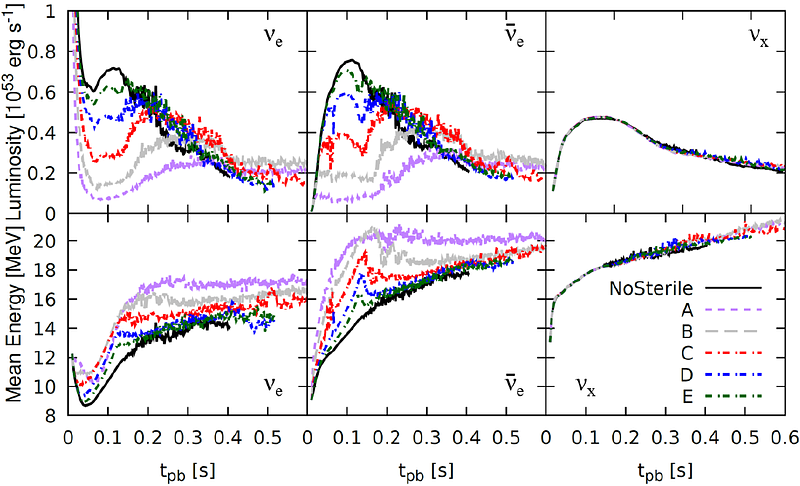Core-collapse supernova explosions hindered by eV-mass sterile neutrinos

Core-collapse supernova explosions hindered by eV-mass sterile neutrinos
Kanji Mori, Tomoya Takiwaki, Kazunori Kohri, Hiroki Nagakura
AbstractLight sterile neutrinos, $\nu_s$, are often introduced to explain an anomalous deficit in the electron antineutrino flux from nuclear reactors. If they exist, sterile neutrinos would also be produced in collapsing massive stars through the active-sterile neutrino oscillation. In order to investigate the impacts of sterile neutrinos on supernova dynamics, we perform two-dimensional neutrino-radiation hydrodynamic simulations of stellar core-collapse coupled with the active-sterile oscillation. As the initial condition of our simulations, we adopt a blue supergiant model that is tuned to reproduce observational features of the SN 1987A progenitor to compare our models with observations of the event. It is found that the active-sterile oscillation reduces the $\nu_{e}$ and $\bar{\nu}_e$ fluxes and decreases the explosion energy. We also find that, if the mixing angle $\theta$ and the mass difference $\delta m_\mathrm{s}^2$ between $\nu_e$ and $\nu_s$ are large enough, the star fails to explode. This suggests that these mixing parameters relevant to sterile neutrinos could be constrained by supernova explodability, though other uncertainties in supernova theory need to be addressed to refine them. In addition, we predict neutrino signals from a nearby supernova event and find that the neutrino event number can significantly decrease because the $\nu_e$ and $\bar{\nu}_e$ fluxes are reduced. In particular, DUNE observations of $\nu_e$ will be useful to search for a signature of sterile neutrinos with a tiny mixing angle because a smaller mixing angle leads to a larger effect on the $\nu_e$ flux.